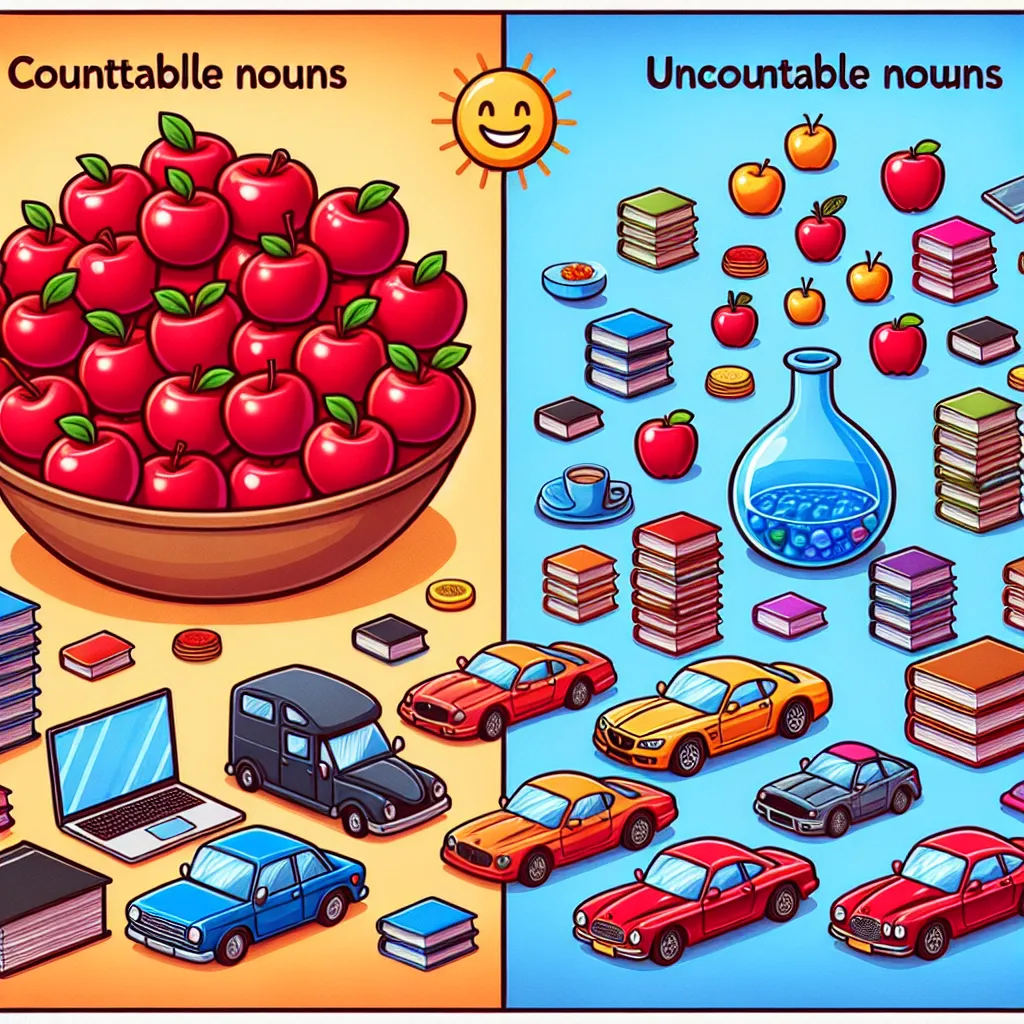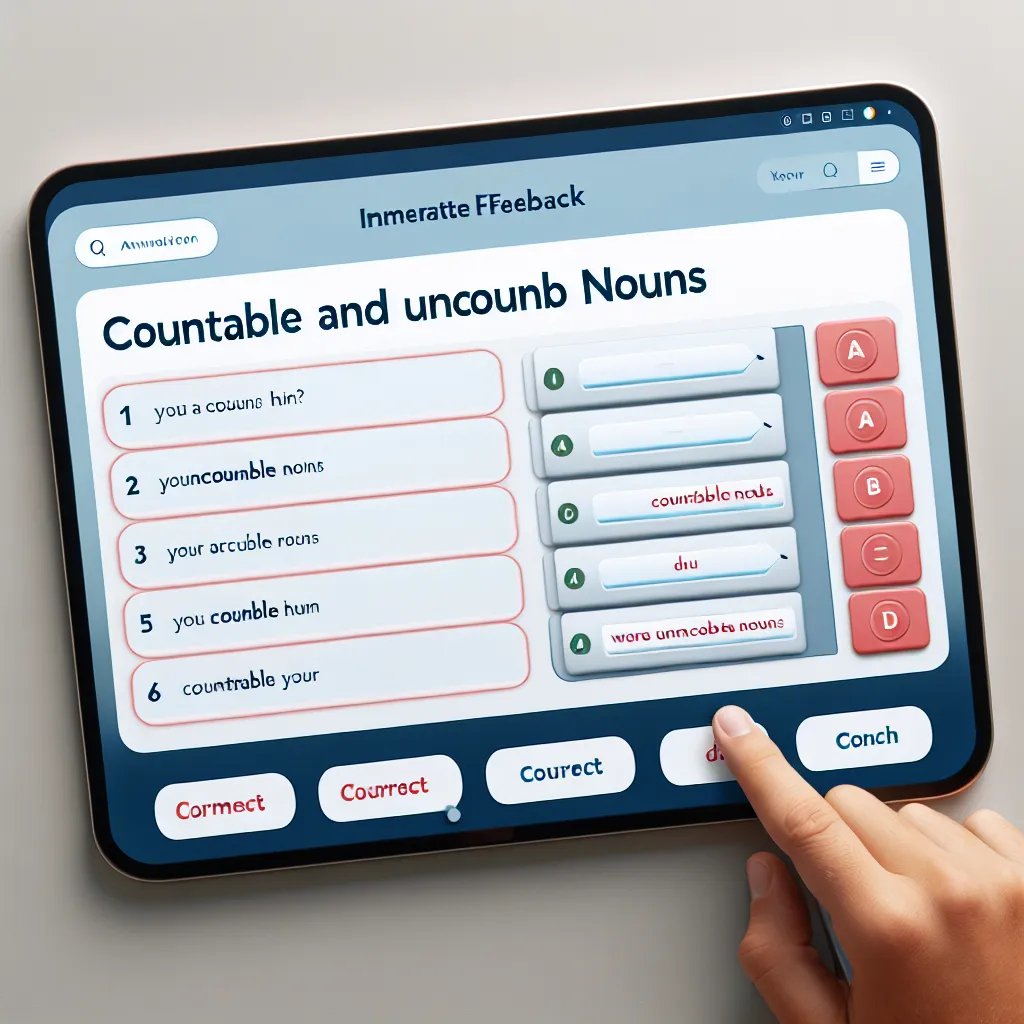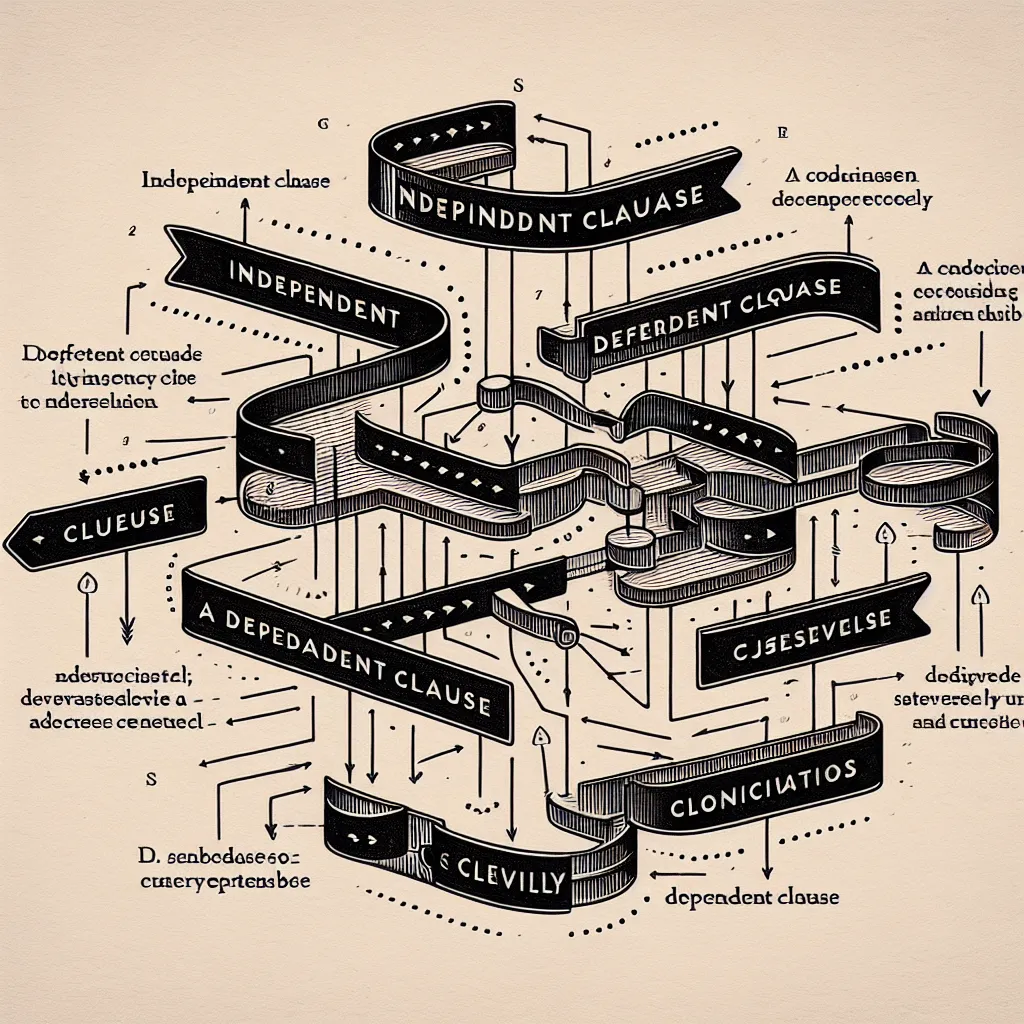Understanding the distinction between countable and uncountable nouns is crucial for mastering English grammar. This knowledge not only helps you construct grammatically correct sentences but also enhances your overall communication skills. In this comprehensive guide, we’ll explore effective strategies to learn and remember the difference between these two types of nouns.
What Are Countable and Uncountable Nouns?
Before diving into learning methods, let’s clarify what countable and uncountable nouns are:
Countable Nouns
Countable nouns are objects that can be counted as individual units. They have both singular and plural forms. For example:
- One book, two books
- A car, three cars
- An apple, five apples
Uncountable Nouns
Uncountable nouns, also known as mass nouns, refer to things that cannot be counted as separate units. They only have a singular form. For example:
- Water
- Information
- Happiness
 Countable and Uncountable Nouns Concept
Countable and Uncountable Nouns Concept
Strategies to Learn the Difference
1. Memorize Common Lists
One effective method is to memorize lists of common countable and uncountable nouns. Start with basic categories:
Countable:
- People: teacher, student, friend
- Animals: dog, cat, elephant
- Objects: pen, chair, phone
Uncountable:
- Liquids: water, milk, oil
- Materials: gold, wood, plastic
- Abstract concepts: love, time, knowledge
2. Use Visual Aids
Create or find visual representations of countable and uncountable nouns. For example:
- Draw a single apple and label it “an apple” (countable)
- Draw a glass of water and label it “water” (uncountable)
Visual associations can significantly enhance your memory and understanding.
3. Practice with Determiners
Learn which determiners go with each type of noun:
Countable nouns:
- a/an, the, some, any, few, many, each, every
Uncountable nouns:
- the, some, any, much, little
Practice using these in sentences:
- I need a pen. (countable)
- I need some water. (uncountable)
4. Understand Exceptions and Tricky Cases
Some nouns can be both countable and uncountable, depending on context:
- Glass (material) vs. a glass (container)
- Paper (material) vs. a paper (document)
Learn these exceptions through context-based examples.
5. Use Online Quizzes and Exercises
Numerous websites offer interactive quizzes on countable and uncountable nouns. Regular practice with these tools can reinforce your understanding.
 Online Grammar Quiz Interface
Online Grammar Quiz Interface
6. Create Your Own Sentences
Construct sentences using both types of nouns. This active learning approach helps solidify your understanding:
- I bought three books yesterday. (countable)
- I need more patience when learning grammar. (uncountable)
7. Listen and Read Extensively
Expose yourself to authentic English through books, podcasts, and movies. Pay attention to how native speakers use these nouns in context.
8. Use Mnemonic Devices
Create memory aids to remember tricky nouns:
- “You can count sheep, but not sheep’s clothing.”
Common Mistakes to Avoid
-
Using plural forms for uncountable nouns:
Incorrect: I need informations.
Correct: I need information. -
Using singular verbs with plural countable nouns:
Incorrect: The books is on the table.
Correct: The books are on the table. -
Using “much” with countable nouns:
Incorrect: How much books do you have?
Correct: How many books do you have?
Practical Exercises
-
Categorization Exercise:
Sort these nouns into countable and uncountable:
(chair, rice, idea, song, furniture, milk, pencil, advice) -
Fill in the Blanks:
Complete sentences with “much” or “many”:- How ____ sugar do you need?
- How ____ apples are in the basket?
-
Singular/Plural Practice:
Write the plural form of these countable nouns:
(child, mouse, person, foot)
Next Steps
After mastering the basics of countable and uncountable nouns:
- Practice using quantifiers (e.g., some, any, few, little) with both types of nouns.
- Explore more complex grammar topics that involve these nouns, such as article usage.
- Take a placement test to assess your overall grammar skills and identify areas for improvement.
Understanding the difference between countable and uncountable nouns is a fundamental step in mastering English grammar. By employing these strategies and consistently practicing, you’ll develop a strong grasp of this concept. Remember, language learning is a journey – be patient with yourself and celebrate your progress along the way.




